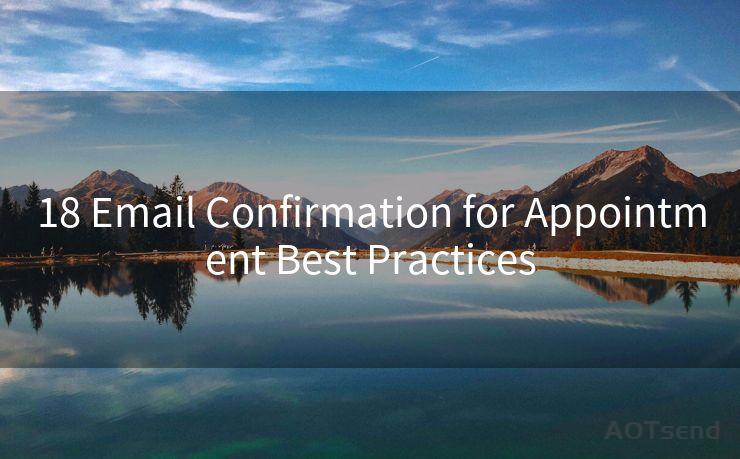18 Email Confirmation for Appointment Best Practices




When it comes to managing appointments, one of the most crucial steps is sending a confirmation email. This not only ensures that both parties are on the same page but also helps to reduce no-shows and misunderstandings. Here are 18 best practices for crafting an effective appointment confirmation email.
1. Clear Subject Line
Start with a clear and concise subject line that immediately informs the recipient that this is an appointment confirmation. For example, "Confirmation of Your Appointment on [Date]."
2. Personal Greeting
Begin the email with a personal greeting, using the recipient's name. This adds a touch of familiarity and warmth to the communication.
3. Appointment Details
Include all the pertinent details of the appointment, such as the date, time, location, and the purpose of the meeting. Double-check these details for accuracy.
4. Recap of Discussion Points
If the appointment was preceded by a discussion or consultation, briefly recap the main points discussed. This helps to refresh the recipient's memory and sets the context for the upcoming meeting.
5. Instructions and Preparation
Provide any specific instructions or preparations the recipient should make before the appointment. This could include bringing certain documents or being prepared to discuss particular topics.
6. Contact Information
Include your contact information, or that of your assistant, in case the recipient has any questions or needs to reschedule.
7. Confirmation of Receipt
Request a confirmation of receipt from the recipient. This can be a simple reply email or a link to click, acknowledging that they have received and understood the appointment details.
8. Reminder of Cancellation Policy

If you have a cancellation policy, state it clearly in the confirmation email. This helps to manage expectations and avoid any misunderstandings.
9. Thank You Note
End the email with a thank you note for their time and consideration. This leaves a positive impression and sets the tone for a productive appointment.
10. Professional Tone
Maintain a professional tone throughout the email. Avoid colloquial language or slang, and stick to a formal yet friendly register.
11. Mobile-Friendly Format
Ensure that your email is mobile-friendly. Many people check their emails on their smartphones, so it's essential that your message displays correctly on smaller screens.
12. Call to Action
Include a clear call to action, such as confirming the appointment by clicking a link or replying to the email.
🔔🔔🔔
【AOTsend Email API】:AOTsend is a Managed Email Service for sending transactional emails. Support Email Types: reminders, authentication, confirmations, notifications, verification codes, invoices, password resets, account activations, billing statements, two-factor authentication (2FA), and one-time passwords (OTP) emails, etc. $0.28 per 1000 Emails. 99% Delivery, 98% Inbox Rate.
You might be interested in:
Why did we start the AOTsend project, Brand Story?
What is a Managed Email API, How it Works?
Best 25+ Email Marketing Platforms (Authority,Keywords&Traffic Comparison)
Best 24+ Email Marketing Service (Price, Pros&Cons Comparison)
Email APIs vs SMTP: How they Works, Any Difference?
13. Avoid Spam Filters
Be mindful of spam filters. Avoid using too many links or attachments, and don't use overly aggressive or sales-oriented language.
14. Testing
Send a test email to yourself before sending it to the recipient. This allows you to check for any formatting issues or typos.
15. Timely Delivery
Send the confirmation email promptly after the appointment is scheduled. This ensures that the recipient has enough time to prepare.
16. Branding
If possible, incorporate your brand's logo and colors into the email template. This helps to reinforce your brand identity and professionalism.
17. Follow-Up
Consider sending a follow-up email a day or two before the appointment as a reminder. This can help reduce no-shows.
18. Feedback Loop
Encourage feedback by providing a link or email address where the recipient can share their thoughts on the appointment process. This helps you to continually improve your service.
By following these best practices, you can ensure that your appointment confirmation emails are clear, professional, and effective. Remember, communication is key to a successful appointment, so take the time to craft a thoughtful and detailed confirmation email.




Scan the QR code to access on your mobile device.
Copyright notice: This article is published by AotSend. Reproduction requires attribution.
Article Link:https://www.mailwot.com/p2856.html



